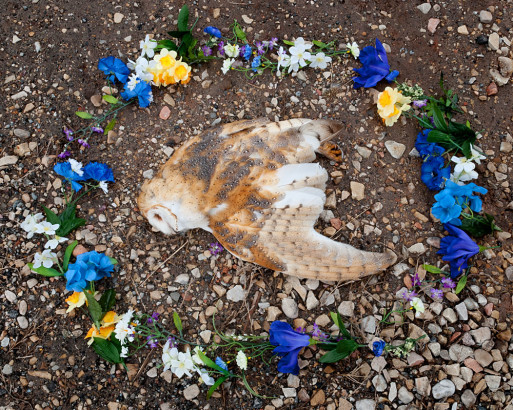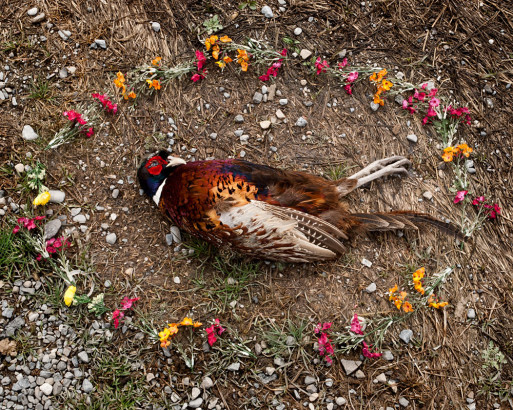Imagine stopping at the side of the road to give a dead possum a funeral, complete with flowers and stones marking the burial site. Most of us would likely cringe at the thought, but photographer Emma Kisiel has made it part of her life work.
Her goal is to build a wall of flowers and beauty around each subject, elevating them to a human-like importance.
Her photo series, At Rest, features animals who have died naturally or as a result of car collisions. Kisiel makes sure she never touches the animals before she photographs them, both for sanitary purposes and to show her audience what the creatures looked like in their final moments. Her goal is to build a wall of flowers and beauty around each subject, elevating them to a human-like importance.
She had the idea for the series when she came across countless animals that had become roadkill. Kisiel noticed that people tend to view these animals as more of a nuisance than a once-living being that met its end on the road. Her series depicts animals in every state of decay and condition; some are naturally beautiful in death, such as the barn owl, while others are more uncomfortable to see, such as the possum.
Kisiel wants people to see both aspects in her work. She says, “My photographs convey the sublime, the grotesque and the lure of the macabre; we can hardly bear the visual of death, yet we cannot tear our eyes away.”
We all recognize death as being a humbling and sacred event that requires some form of acknowledgement or mourning when it happens to a human being.
The series teaches us a bit about our own fascination with death by posing two seemingly-unrelated ideas next to one another: roadkill and funerals. We all recognize death as being a humbling and sacred event that requires some form of acknowledgement or mourning when it happens to a human being. When it happens to an animal, most humans tend to overlook it, and view it as a natural part of life.
This series teaches us both that humans treat death with a great deal of tenderness and care, but that humans also need to accept the naturalness of it in their own lives. Animals die every day, and their bodies are left unburied, unmourned and forgotten. They are left to decompose into the soil or give nutrients to living insects or predators. This is a thought that makes many people uncomfortable when they think about their own eventual deaths, which is what makes Kisiel’s work so compelling. It forces us to confront death with our own eyes, without any of the embalming or beautification that we often see on our fellow humans’ bodies. In this way, death can be grisly, but one can also find beauty in this gritty, natural event.

 Emma Kisiel Views Death Through an Unusual Lens
Emma Kisiel Views Death Through an Unusual Lens




 First the Wealth Gap, Now the U.S. Has a Growing Health Gap
First the Wealth Gap, Now the U.S. Has a Growing Health Gap
 How to Comfort A Dying Loved One
How to Comfort A Dying Loved One
 Our Annual Seven Holiday Gifts for Someone Who Is Grieving, 2024 Edition
Our Annual Seven Holiday Gifts for Someone Who Is Grieving, 2024 Edition














